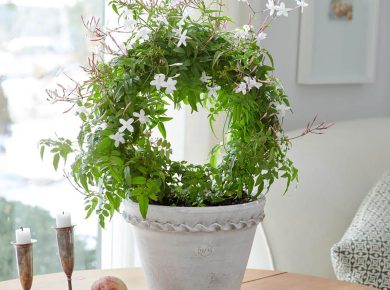How to Get Started with Macrame: A Comprehensive Guide for Beginners
Macrame, an ancient craft with roots dating back to the Babylonian Empire, has experienced a resurgence in popularity in recent years.
The intricate knots and beautiful designs of macrame make it an appealing art form for those with a creative spirit.
If you’re interested in exploring this historical hobby, but unsure of where to start, this guide will help you navigate the world of macrame as a beginner.
Getting Started with Macrame
Before diving into your first macrame project, it’s important to gather the necessary supplies and familiarize yourself with basic knots.
By taking these initial steps, you’ll be well on your way to creating stunning macrame pieces.
A. Macrame Supplies
To begin your macrame journey, you’ll need a few essential supplies:
- Sharp scissors: Choose a pair of sharp scissors to ensure clean cuts on the cord without fraying.
- Measuring tape: Use a measuring tape to determine the length of cord required for your project and avoid wasting materials.
- Rotary cutter: A rotary cutter can be a handy tool for creating fringes and intricate designs in your macrame projects.
- Pet brush: A pet brush, or a wire brush, can be used to create perfect fringes and add texture to your macrame pieces.
- Stiffening spray: Consider using stiffening spray from a craft store to make working with the cord easier and keep your project securely in place.
B. Choosing the Right Macrame Cord
Selecting the appropriate macrame cord is crucial for the success of your projects.
There are various options available, each suited to different types of macrame creations.
1). Macrame Cord Material
The most commonly used and recommended material for macrame cords is cotton.
It is easy to work with, offers a pleasant texture, and comes in a variety of colors.
However, you can also find macrame cords made from hemp, jute, or waxed materials.
2). Macrame Cord Thickness
The thickness of the macrame cord depends on the size and intricacy of your project.
For larger pieces like wall hangings, a thicker cord is recommended.
Thinner cords work well for smaller and more delicate projects such as jewelry or keyrings.
3). Macrame Cord Patterns
As a beginner, you have several options when it comes to macrame cord patterns. The most suitable choices for beginners include:
- 3-Ply macrame rope: Also known as triple-twisted cotton, this cord is easy to work with and less likely to unravel.
- Single twist cord: This cord is ideal for simple projects and creates beautiful straight fringes, but it may unravel more easily.
- Braided macrame cords: These cords are stiff and work well with half-hitch knots, providing stability and reducing the risk of fraying.
Tips and Tricks for Macrame Beginners
Embarking on your macrame journey can be both exciting and challenging.
Here are some useful tips and tricks to help you navigate the learning process:
- Secure your working area: If you’re using a wooden dowel, tie your hanging string onto it and tape it down or hang it up for easier knot tying.
- Prevent cord unraveling: Tape the ends of your cord to prevent unraveling and make it easier to slide through knots.
- Master the basic knots: Start by learning and practicing the fundamental knots such as the larks head knot, square knot, half hitch, and double half hitch knot.
- Follow tutorials and patterns: Utilize beginner-friendly YouTube tutorials and online patterns to learn new techniques and gain inspiration for your projects.
- Measure your cord: Ensure your cord is four times the length of your project to account for knotting and design. Leaving extra inches of cord will prevent running out during the process.
- Consider fringe length: Different knots and styles require varying cord lengths, so keep your desired fringe length in mind when planning your project.
- Save scraps for smaller projects: Don’t discard leftover cord; save it for future smaller macrame projects.
- Practice patience: Macrame requires time and practice to perfect your skills. Embrace the process and enjoy the journey of learning this beautiful craft.
Conclusion
Macrame is a captivating craft that allows you to create stunning works of art through the skillful manipulation of cord and knots.
By gathering the necessary supplies, selecting the right macrame cord, and following helpful tips, you’ll be well-equipped to embark on your macrame journey as a beginner.
Remember to be patient with yourself and embrace the learning process.
With dedication and practice, you’ll soon find yourself creating intricate macrame masterpieces. Happy knotting!





